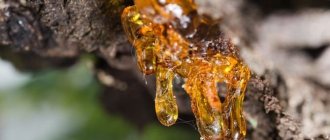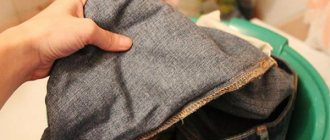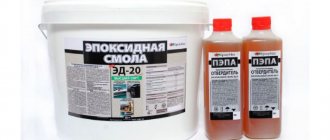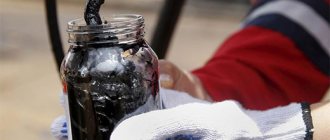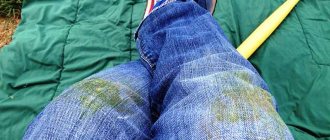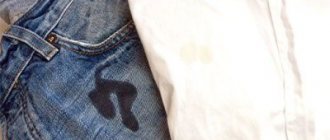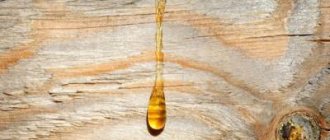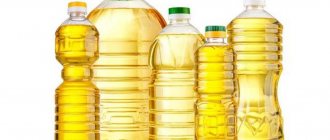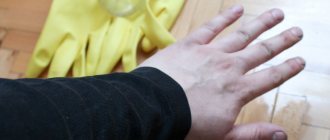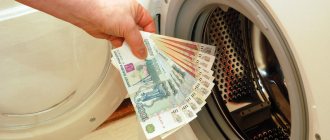At the next project I am involved in, it was necessary to replace the wooden covering in the bathhouse. It was made from homemade boards, so immediately after starting to dismantle the coating, it turned out that resin began to be released in some places. He cleaned the resin, replaced the boards, and gave the owner a lecture about wood and resin, and also told him how to clean the resin from the board. Having arrived home, I decided that it would be useful for you to learn how to remove resin from the surface of the board.
Source ytimg.com
How to remove resin using folk remedies
Wooden boards are a very popular material, which, when working with it, often gets dirty with resin, which is undesirable. Below I will tell you about proven ways to remove resin from a wooden board.
Wood is an inert material, so cleaning its surface from resin will not be difficult. For this we will use folk remedies, because it will not be difficult to find liquids that dissolve adhesive substances at home.
Ammonia and acetone
A solution for dissolving resin from ammonia and acetone is prepared by mixing these two components in a ratio of 2 to 1. And the process of removing resin occurs as follows:
- apply the solution to the board using a rag;
- rub in the product until foam appears;
- leave the board with foam for 20 minutes;
- wipe the surface of the board with a clean damp cloth;
During the degumming process, a layer of wood 1-2 mm thick is removed. Therefore, it is advisable to carry out the procedure after sanding the wooden material.
Source ad-cd.net
Potash and soda
To make this reagent you will need potassium carbonate, also known as potash, and soda. They need to be mixed in equal quantities; 50 g of each component will be enough.
The powder mixture must be poured with a liter of hot water. Next, you need to wipe the boards stained with resin with a still hot solution until the areas of the boards stained with resin are completely cleaned.
It will be most convenient to do this with semi-hard or soft brushes, although sponges can also be used. However, do not use metal brushes; they are not suitable for processing with alkalis and can damage the wooden surface. After the process, it is necessary to rinse and dry the surface of the board.
If you want to speed up the procedure, add 250 ml of acetone to the ready-made mixture.
Source alicdn.com
Vinegar
You can also get rid of unwanted resinous stains and sagging with the help of weak acids. For example, acetic acid, which is extremely easy to find at home.
Before applying the acid, you must dilute the concentrated vinegar with water. Proportion 1 to 50.
A rough sponge, rag or brush should be moistened in the solution, and then rub the material until it is clear of resin.
A similar solution can also be used to wipe the material after using alkalis, since during the neutralization reaction the vinegar will remove the excess reagent.
Where does it come from in the bathhouse?
The source of resin is furniture or wall or ceiling cladding made from coniferous wood. In this regard, they all belong to the risk group.
The following breeds are most common in our country:
pine;
larch;
spruce;
fir;
cedar.
The assortment of stores is dominated by pine. However, the most resin is found in fir and spruce wood - these trees have knots along the entire length of the trunk from the very bottom, and resin channels lead to each of them. The least amount of resin is in the lower part of the cedar trunk, and in pine that has undergone tapping (industrial collection of resin).
Please note that this is general information that applies to most trees of one type or another. You can purchase material that has virtually no resin, regardless of the breed. However, the opposite situations are also possible when the amount of resin is too large.
When installing trim or furniture made from a material that is too resinous, a difficult situation arises. As soon as the bath reaches operating temperature, the resin changes from a thickened state to a liquid state and begins to release abundantly. Since it is under some pressure in the wood, the amount of oleoresin released can be quite large.
At the same time, the discharge occurs over a fairly long period of time, during which a visit to the bathhouse turns into not the most pleasant procedure.
How to scrub with professional compounds
You can clean a wooden product from resin not only using folk methods; there are professional means for this. The most common such means are acetone, alcohol, white spirit, nitro solvent. In some stores you can find special products for removing tar.
White Spirit
White spirit is an organic solvent that is used for diluting: alkyd enamels, varnishes, oil paints, mastics. Due to its composition, white spirit perfectly dissolves fats, oils, and organic sulfur compounds. Therefore, it removes traces of resin well on the surface of wood.
The process of cleaning the surface of wood from resin with white spirit is as follows:
- soak a rag or cotton pad in solvent;
- apply the product to the area stained with resin;
- wait a few minutes;
- Use a rag to wipe off the sticky residue from the edges to the center.
Source wikimedia.org
Mellerud
Mellerud is a special product designed to remove traces of glue, but it can also remove:
- lipstick;
- mascara;
- soot;
- resin;
- oil.
The following types of surfaces can be treated with this product:
- polyvinyl chloride;
- wooden;
- textile;
- ceramic;
- glass.
Cleaning the surface of resin using Mellerud occurs in the following order:
- apply the solution with a sponge or brush to the surface stained with resin;
- wait a while;
- Wipe the surface with a clean cloth.
Source ytimg.com
Solvent
Solvent is a universal nitro solvent that is used to work with the following substances:
- oils;
- paints;
- bitumen;
- rubber;
- enamels;
- varnishes.
The surface stained with resin is cleaned using a solvent in a similar way to other solvents:
- Apply the product to stains with a rag or a dampened brush;
- wait a few minutes;
- wipe the surface with a clean cloth.
When working with solvent, follow standard safety rules for handling toxic liquids, and also use gloves and a respirator.
Source avto-sila.com.ua
Old method - ammonia + turpentine
To prepare the mixture, you need to combine 1 tsp. ammonia with the same amount of turpentine and add 1 tbsp. l. starch.
- The resulting paste should be applied to the stain, trying to apply only the contaminated area.
- Wait a few hours and remove the dried mass from your clothes.
- After the operation, it is necessary to wash the cleaned item.
Mechanical removal
In order to remove resin from the board mechanically, you must wait until the accidentally applied mass hardens. Then it is removed using a knife, scalpel, spatula or any other sharp object. After removal, you need to polish the surface with sandpaper or another grinding tool.
Sometimes it makes sense to cut out large resinous areas in the area of knots with a knife or drill with a router. The indentations made must be filled with putty or a wooden chip placed on glue, after which the board must be sanded.
If you miss drops of resin, over time they will become a source of new sticky drops. And when heated, the release of resin on softwood boards increases.
Why clean up?
Natural resin protects tree wood from many adverse factors. However, during the construction and operation of wooden structures, the adhesive substance brings a lot of trouble. Similar problems are caused by synthetic resin that gets onto the boards during work.
Any tar stains must be removed for several reasons:
- resin is a sticky substance, various objects (tools, rags, clothes, materials) can stick to it;
- resinous areas darken over time - this spoils the overall appearance of the wood coating;
- If there are stains and discharge, it is impossible to achieve beautiful, uniform varnishing or painting of the boards.
Features of cleaning before and after painting
It is recommended that degumming be carried out before painting, since applying a paint coating to a wooden surface does not stop the appearance of a new portion of resin on the surface.
The chances of preserving the decorative coating by carrying out the de-resining process before painting are higher. Resin can be removed from the surface of wood using various means, including solvent; you can also use a mechanical removal method. However, in any case, after treating the surface, it must be sanded.
If your wood product is already painted, then the process of removing resin becomes more complicated. Use safe products to avoid damaging the decorative coating.
Source yandex.net
The following composition is suitable:
- ammonia (50 ml);
- liquid soap (25 g);
- water (1 l).
The water for mixing the components must be hot, and the process must be carried out until the liquid has cooled. Using a rag soaked in a soap solution, remove the released resin.
I recommend the following video, in which the author cleans the board from resin:
Additional Tips
With any method of removing resin, it is advisable to remember and apply useful recommendations . They will help you achieve the desired result, preserve wood material and protect your health:
- When using ready-made solvents, you must wear personal protective equipment (gloves, respirator).
- Chemical cleaning should be done outdoors or in a well-ventilated area.
- If conditions permit, the boards should be exposed to high temperatures. Heating will speed up the release of resin from the wood, and the problem will not recur in the future.
- In some cases, you can get rid of resin deposits on a wooden structure using a blowtorch.
Recipes and tips for removing resin from various surfaces are presented in this section.
As a result…
Wooden boards are a very popular material, but they very often get dirty with resin, which can cause unnecessary problems. Therefore, the resin is removed from the surface of the board. And for this process they can use ready-made chemistry, folk remedies or mechanical methods. The de-resining agent must be selected based on whether your product is painted and the amount of resin on it. After cleaning the board in any way, its surface must be sanded.
Question
Write in the comments what do you think is better for removing tar – folk or professional remedies?
Why does it have to be removed?
Resin extracted from upholstery or furniture has a lot of unpleasant qualities:
- if it sticks to the skin, you won’t be able to simply wash it off with soap - you need to use solvents such as turpentine or white spirit;
- in a steam room, heated resin can cause a burn - the hot substance sticks to the skin and instantly causes the formation of bubbles;
- It is not always possible to notice resin drips in time, especially if the lighting in the wig or washing compartment is not too bright. Often, users discover the problem only after getting dirty or burned.
The problems are especially great in children or older people whose vision is no longer as sharp. It is not easy to remove dirt from the skin - ordinary detergents are practically powerless, and the use of chemical compounds can cause allergic reactions or skin irritation.
In addition, all the pleasure and comfort from visiting the bathhouse spoils, the mood drops, and a feeling of disappointment arises. Therefore, detected resin leaks must be removed with maximum efficiency.
Besides this, there is another good reason to remove resin - the appearance of the room. Sticky areas of boards become centers for accumulation of small debris and dirt. On the surfaces of the seats and upholstery, untidy stains with small particles adhering appear, making the appearance of the bathhouse very unaesthetic. It becomes simply unpleasant to use, which the owner must take into account.
How to remove tree resin from clothes and hair?
Now let’s look at the options when not only your hands, but, for example, your hair are stained with resin. Are you planning to get a haircut or throw away soiled clothes? There's no need to rush. There are proven and painless methods for removing tree sap.
Read and apply:
- You can remove resin of this origin from clothing quite easily if you first put it in the freezer and then scrape it with a knife.
- Removing resin with solvents is also possible, but remember that they can cause irreparable damage to the fabric surface. Therefore, use them on dense fabrics or through practice, testing the effect of gasoline or acetone on an inconspicuous area of the item.
- It is necessary to remove tree resin from hair only with safe materials. Peanut butter and mayonnaise work great for this. Apply a small amount to your hair, wrap in cellophane and after half an hour, rinse with warm running water and laundry soap.
